When trying to figure out if Assign, our patient assignment software, will fit your organization’s needs, we are often asked to present our ROI case, and this is often two-fold:
- Showing the clinical value to both the patient and provider, and
- Explaining that Assign can improve patient throughput, decrease LOS, reduce physician burnout, and improve provider satisfaction (especially if you have hospitalist list dissatisfaction)
If you’re still creating your daily rounding list or doing patient distribution manually, or trying to do it in your EHR, then keep reading to learn more about the ROI of our patient assignment solution. Simply put, EHRs are not built to handle complex patient assignment processes. That’s why so many hospitalists, especially those with complex assignment processes, use Assign to automate a lot of the grunt work and do things you can’t do manually.
So what’s the real return on investment of our patient assignment solution? It has to do with your time, your people, and your patients.
Your Time: Assign is an optimization tool that provides immediate labor savings to your organization – just like any other product you would buy to make your life easier. It reduces the time it takes your team to create a manual rounding list down to under 30 minutes. What is your time worth?
Your People: Medaptus’ Assign is a scalable solution. We usually hear a few things: an organization has 1-2 users that do the assignment process, and they are the only employees that know how to do it correctly. Or a hospital has a group of physicians that do the assignment process, and they all hate doing it. So, what happens when the only staff who can create an assignment are out sick? Or on vacation? The assignment process is now a physician or other clinical staff member’s responsibility, which can contribute to burnout. Assign offers a scalable solution that anyone can use and easily be trained on. 
Your Patients: In addition to factors such as burnout and dissatisfaction, there are other mitigation factors that can be way more costly. The cost of having an incident like a missing patient is a lot higher than having a solution like Assign. Do you or your staff worry about missing a patient? These are costs that can be detrimental, such as investigations and patient care impact. 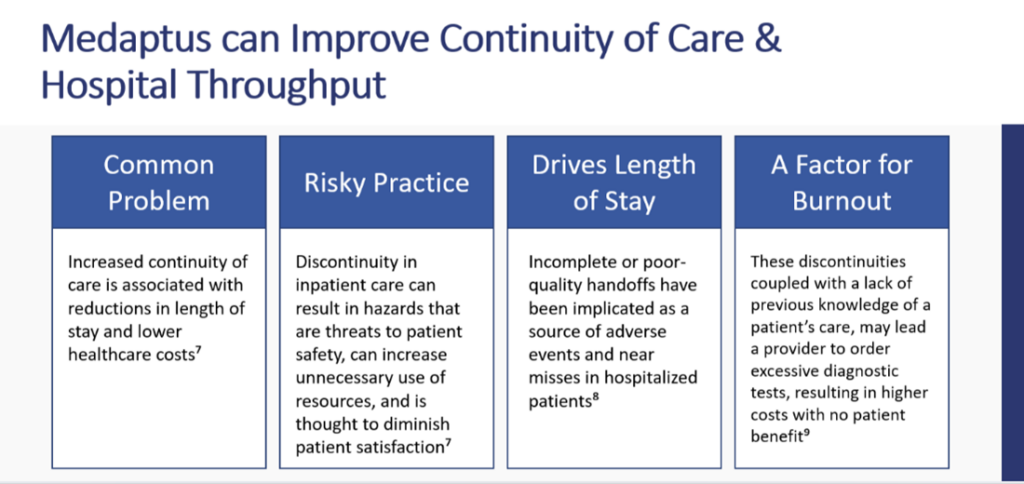
Complex Patient Assignment Process? No Problem.
Let’s explain how Assign is an easy-to-use labor savings tool to solve even the most complex patient assignment challenges.
There are several moving parts to putting together the morning assignment puzzle.
There is roughly a 20 – 25% census turnover each day. However, there is rarely an even number of discharges to new patients (it’s never 1 to 1).
New Admits and Discharges are never a perfect 1 to 1 ratio. Patients going out the door versus coming in is never 1 to 1. This makes balancing the lists even more challenging.
Step 1:
With an ADT feed from your EHR (we integrate with Epic, Cerner, and many other EHRs), medaptus first prepares the census (an often-laborious process when done manually).
Medaptus can differentiate between New Daytime Admissions, Overnight Admissions, and New Transfers to your service, to name a few. Each of these “New” patients can have their own assignment rules.
- Day Time Admissions: 7am – 7pm
- Nighttime Admission: 7pm – 7am
- Transfers – Admission time is a non-factor – ICU -> Hospitalists Team
Medaptus automatically removes discharges and patients that have transferred out of your service. An example would be a patient who upgrades to the ICU. Continuity is automatically established for pre-existing patients. Typically, these patients don’t need to be reviewed each morning; however, there can be some outlier scenarios our rules algorithm can handle.
Step 2:
Medaptus will pull in your scheduling system from a 3rd party vendor (Amion, Qgenda, etc.). This allows the end user to immediately see who is working and adjust the assignment as needed.
You can quickly:
- Remove a provider (sick or call out)
- Adjust a provider’s workload for the day
- Set up a patient for sign out / hand off (for example, on changeover days)
Step 3:
The rules. Now that we have cleaned up the census and imported the schedule, it is time to “put it all together.” Medaptus’ Assign bread and butter is our fully customizable rule set from simple, even headcount balancing to advanced geographical assignments. We can also consider some of the nuanced assignment rules you probably can’t accomplish manually, such as:
Evenly balancing a certain patient type – New Admission 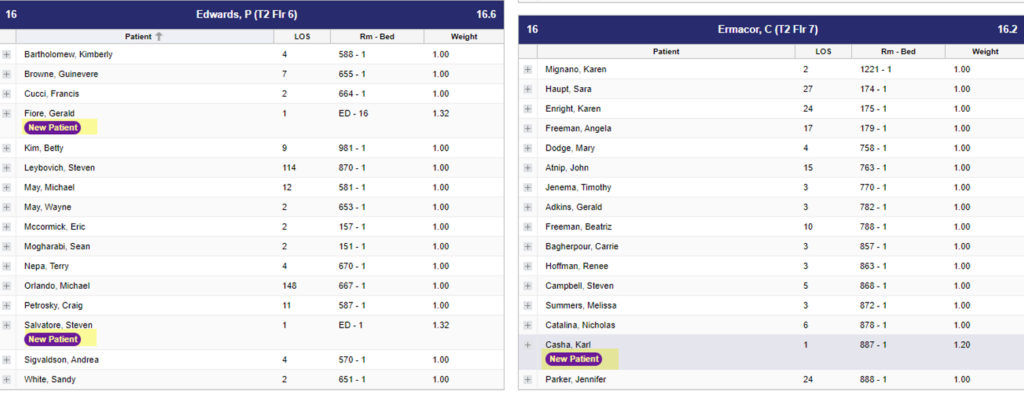
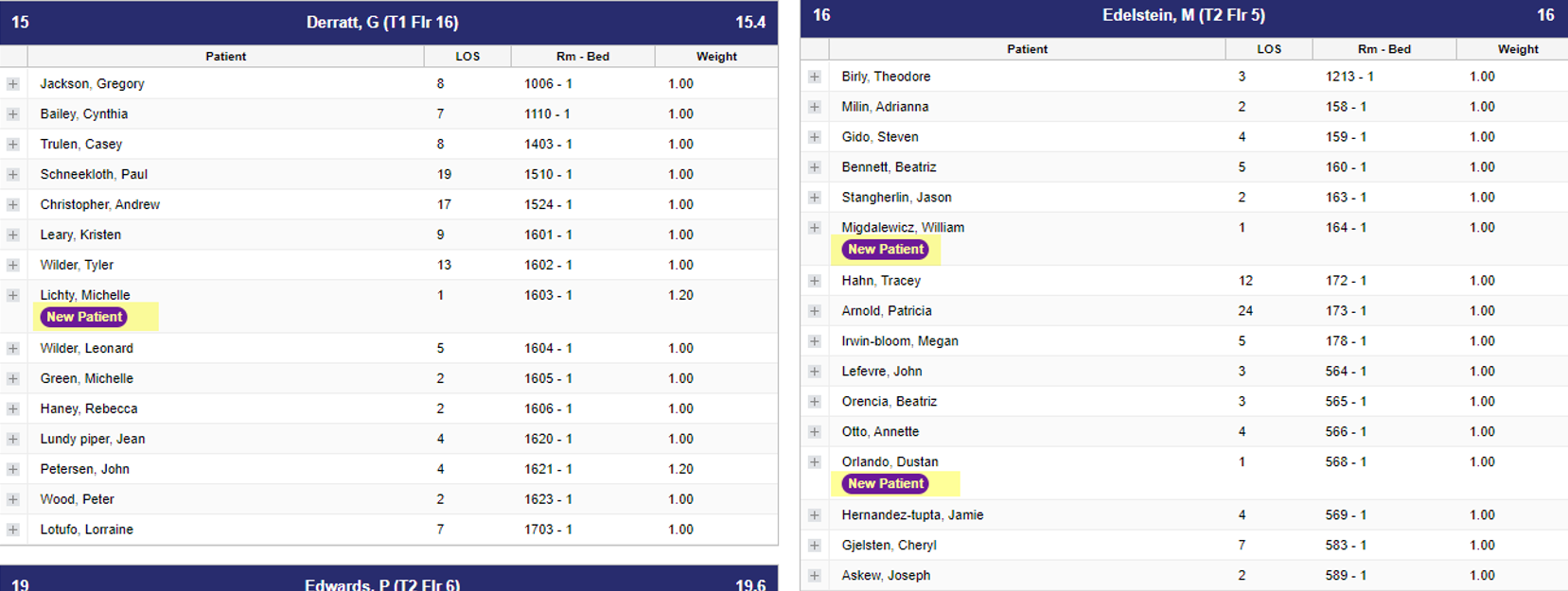
Weighting patients based on certain clinical criteria. For example, in the case below, these ICU patients are “more work” so they are weighted as 1.5 instead of 1 patient.
Medaptus can install a Previous Continuity up to 30 days for same visits and new visits. A provider can get a patient back that has returned to the hospital / Hospitalists’s service. 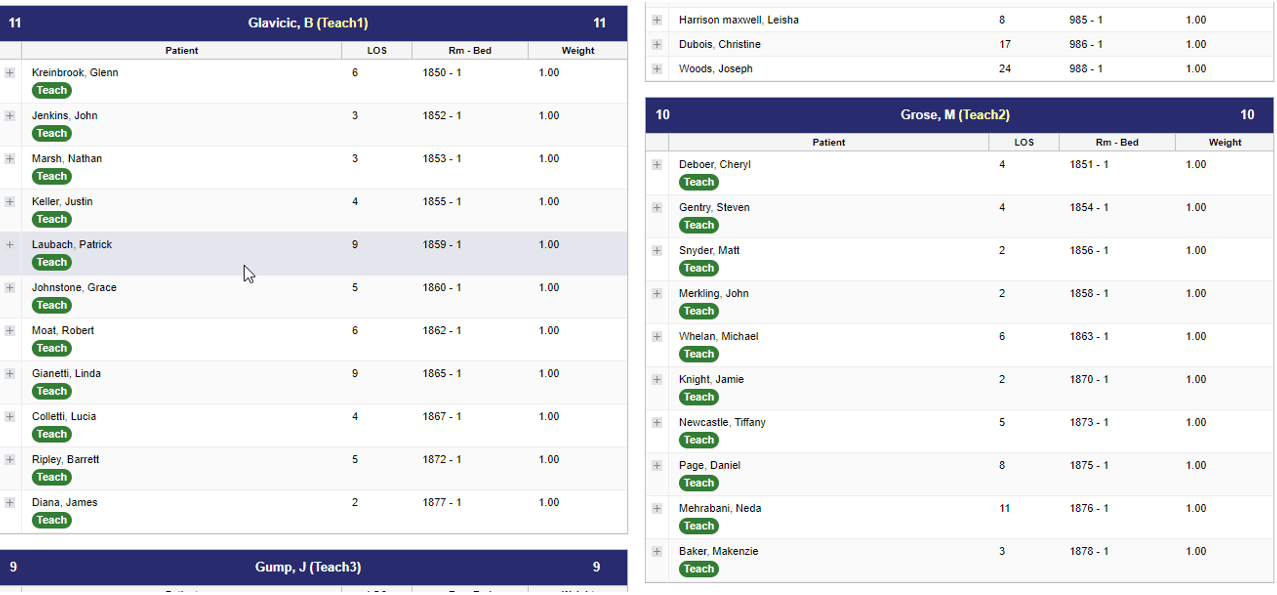
Advanced geographical continuity – if a patient moves beds to a different location, the provider gets that patient back if it means they are outside their primary geography.
You can choose which rules are important to you and your organization and implement the ones that matter most.
Now that you have seen how Medaptus’ Assign handles time-consuming steps and complex scenarios, you can start to paint the full labor savings ROI picture.
Here’s an example of the ROI for a hospital with 3 staff involved in creating the daily rounding lists/doing patient distributions: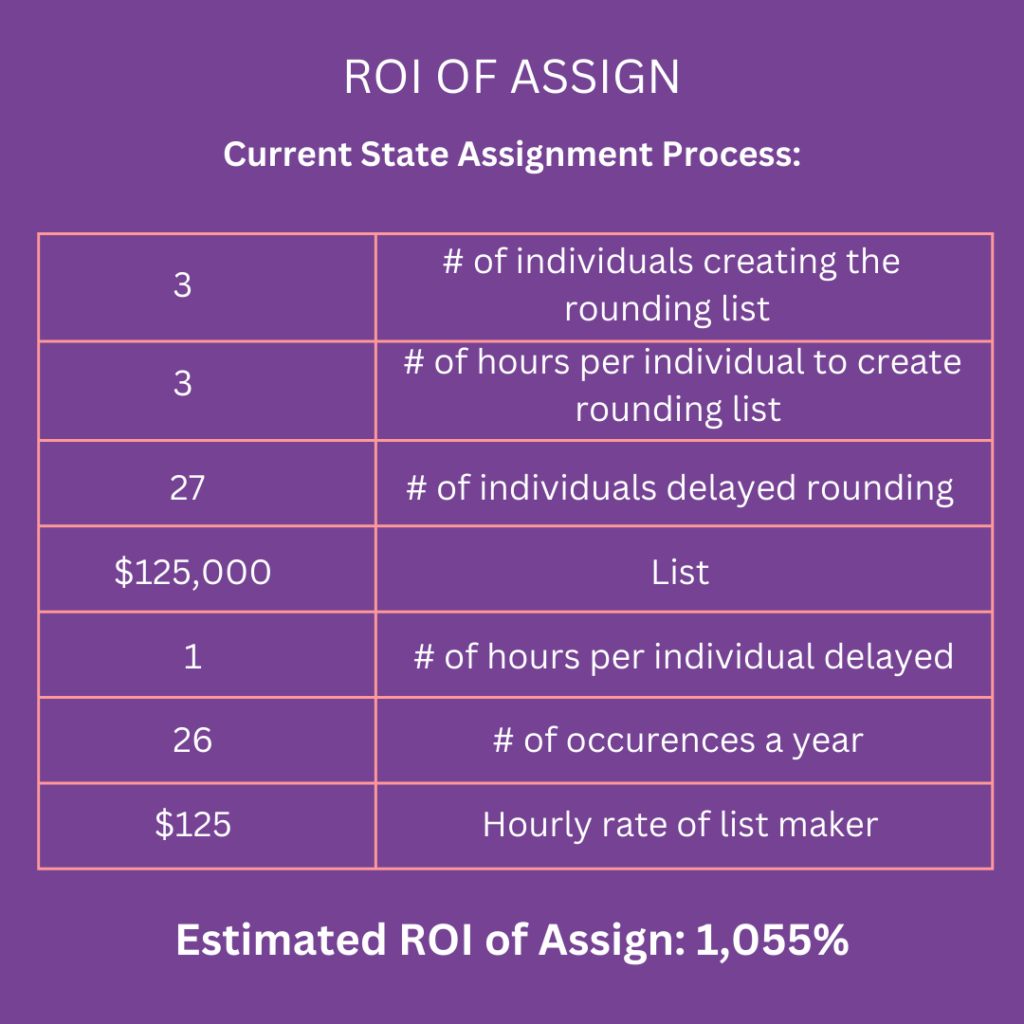
This percentage is based upon comparing the labor savings and cost of Assign which might vary according to hospital size, beds, and integration needs.
Let’s face it: the patient assignment process is complex, tiring, and… no doctor goes to medical school to create rounding lists. Let’s help hospitalists focus on patient care, decrease administrative work, and improve patient safety. Learn more about Assign here.
Get the latest updates and news delivered to your inbox.
Subscribe to our newsletter today.




